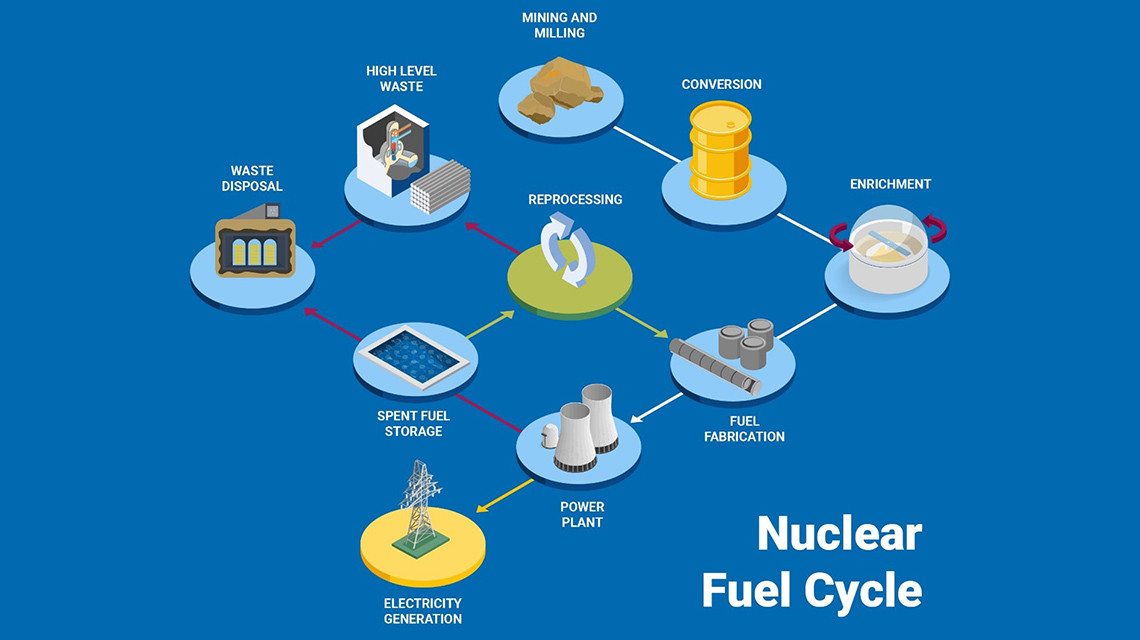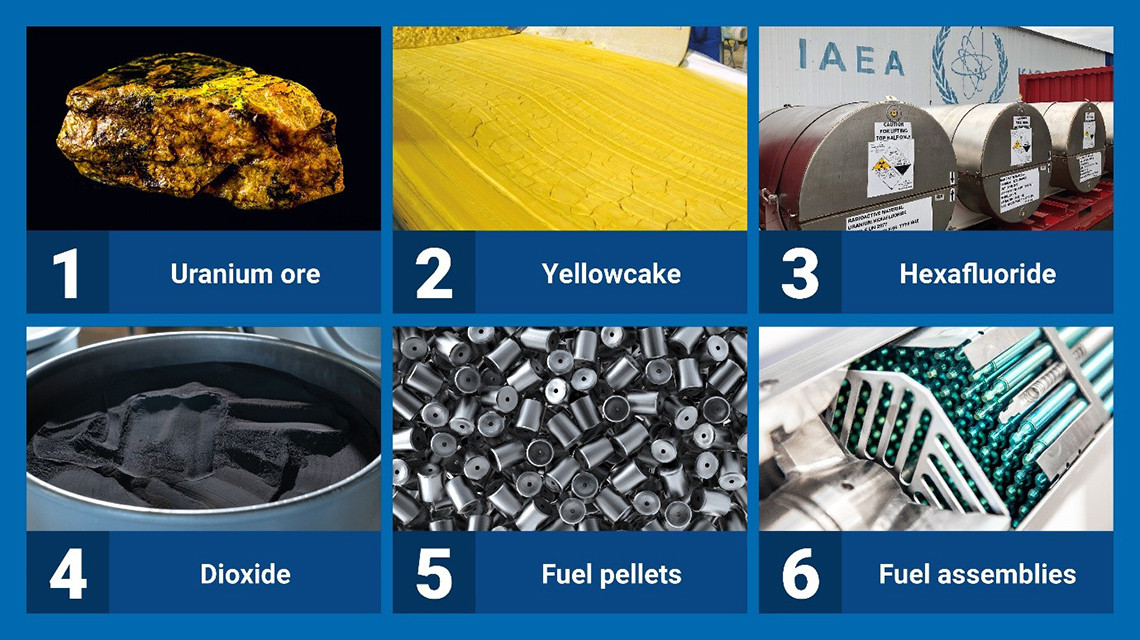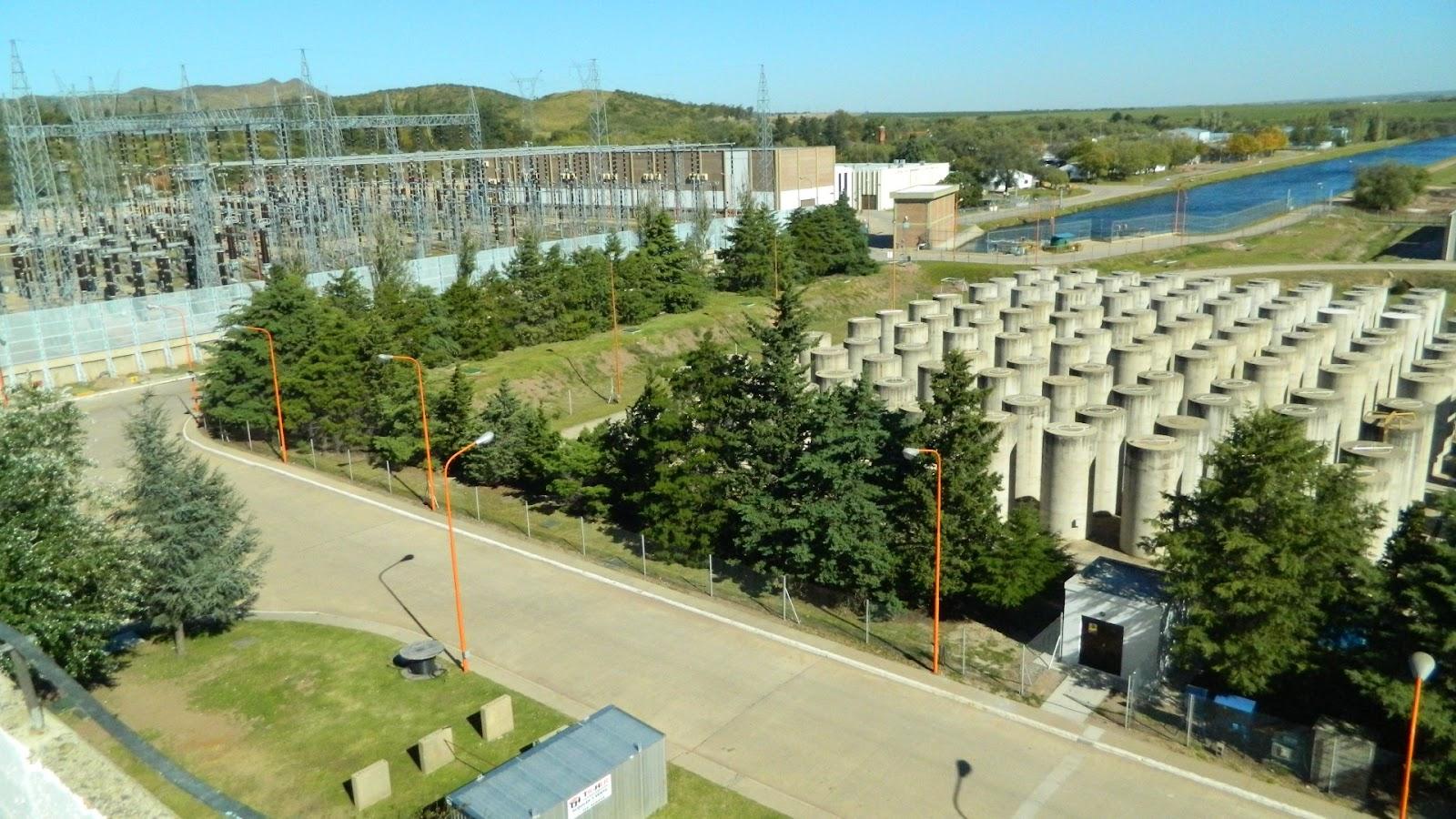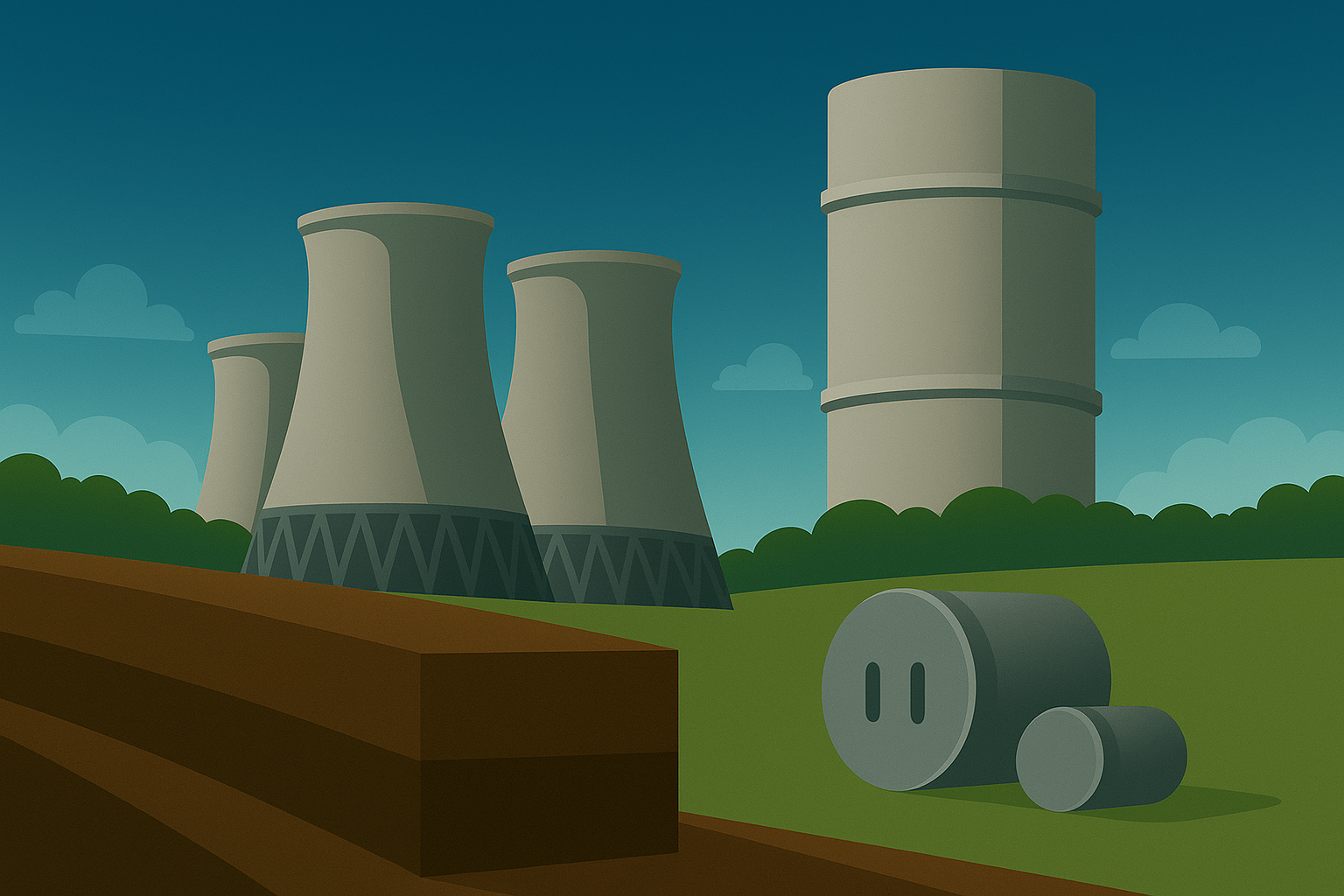In a world striving for safe, sustainable, and carbon-free energy sources, nuclear energy is emerging once again as a key option. Argentina is no stranger to this trend. In fact, it is one of the few countries in the world that has developed nearly every stage of the nuclear fuel cycle, offering a strategic advantage in terms of technological sovereignty and energy security.
Recently, Argentina announced its National Nuclear Plan [PNA], which is structured in three stages: the potential installation of four modular ACR300 reactors at the Atucha site; the export of uranium; and the creation of a nuclear city in the Patagonia. This article focuses on a critical aspect connected to the first two stages of the PNA: the nuclear fuel cycle.
What is the Nuclear Fuel Cycle?
The nuclear fuel cycle encompasses all stages through which fissile material—mainly uranium—passes, from its extraction from the Earth's crust to its final disposal after being used in a nuclear reactor.
The cycle is traditionally divided into three stages [Cirimelo, R, 1995]:
- Front-end: Mining, conversion, enrichment, and fuel fabrication.
- Service phase: Use of the fuel in the reactor to generate energy.
- Back-end: Storage, potential reprocessing, and final disposal of the waste.
The fuel cycle can be open (when used fuel is not reprocessed) or closed (when uranium and plutonium are recovered for reuse)—see Figure 1. Argentina currently follows an open cycle model.

Fuel Cycle Stages in Argentina
Argentina has developed a unique nuclear infrastructure in Latin America, with capabilities spanning almost every stage of the fuel cycle.
Uranium Mining
Uranium is the essential fuel for nuclear reactors. In Argentina, the main deposits are located in Sierra Pintada (Mendoza), Cerro Solo (Chubut), and in other provinces such as Salta and La Rioja. The National Atomic Energy Commission (CNEA) is the key actor in this stage.
Although commercial exploitation has been limited, the PNA includes plans to revive uranium mining. A proposal has even emerged to create YPF Nuclear, a state-backed company to enter the uranium sector.
The outcome of mining is yellowcake, a concentrate that contains up to 80% uranium in the form of U₃O₈ (see Figure 2).
Conversion and Enrichment
Natural uranium cannot be directly used in all types of reactors. It first must be purified and converted into a chemically stable form—typically uranium dioxide (UO₂). If enrichment is required (as for Atucha I, which uses slightly enriched uranium at 0.85%), the uranium is initially converted into uranium hexafluoride (UF₆).
Argentina operates the Pilcaniyeu plant in Río Negro, originally built in the 1980s to develop gaseous diffusion enrichment technology. Although the plant was reactivated in 2010 and 2015, its operation has been intermittent, and the country currently imports enrichment services.
Dioxitek is responsible for purchasing both natural and enriched uranium and converting it into uranium dioxide (UO₂) for fuel fabrication.
Fuel Element Fabrication
Once converted, the uranium is sintered into ceramic pellets, which are then assembled into fuel elements (see stages 5 and 6 of Figure 2). This process is carried out by CONUAR S.A., based at the Ezeiza Atomic Center.
CONUAR supplies fuel for Argentina’s three nuclear power plants: Atucha I, Atucha II, and Embalse, each with specific technical requirements.

Reactor Operation
Argentina operates three nuclear power plants [NASA - https://www.na-sa.com.ar/]:
- Atucha I (1974): Uses slightly enriched uranium and heavy water.
- Embalse (1984): A CANDU-type reactor that uses natural uranium and supports online refueling.
- Atucha II (2014): Similar in design to Atucha I.
During operation, fuel assemblies generate heat through fission. They also produce new fissile isotopes like plutonium-239, which opens the door to potential reprocessing in the future.
Wet Storage
After being removed from the reactor, spent fuel continues to generate heat and must be cooled. Initially, it is stored underwater in pools at the reactor site (see Figure 1). Atucha I and II were designed to accommodate all spent fuel generated over their operational lifetimes.
Dry Storage
After 5 to 7 years, fuel assemblies can be transferred to dry storage facilities. Embalse has on-site concrete silos for this purpose (Figure 3), and in 2022, a similar facility was inaugurated at the Atucha site [NASA].

Reprocess or dispose?
Argentina currently lacks an industrial-scale reprocessing facility. However, during the 1970s, a pilot reprocessing plant operated at the Ezeiza Atomic Center [REVISTAIB, AGENDARWEB, ARGENTINAGOB].
Reprocessing enables the recovery of plutonium and residual uranium, which can be reused in advanced fuels (e.g., MOX). It also significantly reduces the volume of high-level radioactive waste.
In the absence of this technology, the current strategy is direct final disposal, which involves permanently isolating spent fuel in deep geological repositories. This remains an area of ongoing research and development, led by CNEA.
Visual Summary
The open nuclear fuel cycle in Argentina can be illustrated as follows:

Conclusion
Argentina has one of the most advanced nuclear fuel cycles in Latin America, with domestic capabilities ranging from uranium mining to spent fuel management.
To consolidate its leadership, Argentina must:
- Modernize and expand existing capabilities.
- Evaluate reprocessing as a future pathway.
- Advance toward definitive final disposal.
Interested in the future of nuclear energy in Argentina? Share this article and follow us for more insights into nuclear science and technology!

